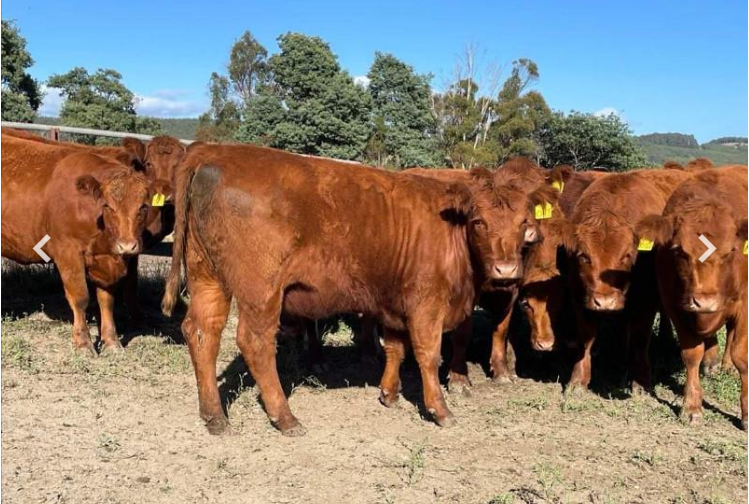
RARE BREEDS TRUST OF AUSTRALIA
powered by TidyHQCattle : Luing
Cattle : Luing
Country of Origin
Isle of Luing, Scotland, UK
Australian Status

Uses
 Beef
Beef
Breed Traits
- Red, gold, white or a combination in coat colour. Red is the dominant colour. Grow a thick winter coat. Long lived.
- Hardy. Thrive in very cold climates. Thrive on rough grazing, naturally marbled beef off pasture.
- Great mothers, fertile, ease of calving, a maternal breed. Calves gain weight and mature quickly.
- Naturally polled. Occasional scurs. Medium sized cattle, cows average 500 kilos and bulls 950 kilos.
- Good feet.
- Very good, placid temperament.
History
Pronounced ling. Developed on the isle of Luing, off the west coast of Scotland. From the late 1947 the Cadzow brothers, Ralph, Denis and Shane, created the breed using beef Shorthorn-Scottish Highland crosses. The crossbreds were inbred and linebred for several generations. This is essentially the Luing breed now. Some sources say an old cattle line on the island was included in the mix. In 1966 the British government officially recognised the breed. First sent to Canada in 1973, and New Zealand in 1975; now in several countries outside the UK such as America and Australia, but not out of rare status numbers anywhere.
Society and Herdbook started in 1965. Showing was not allowed, to keep the breed strong and not bred for fashionable aesthetics, and undersized bulls not registered.
History in Australia
They arrived in Australia in the 1970s.
Breed Organisation
There is no breed organisation in Australia.
A farm in Tasmania breeding Luing: Tasmanian Luing Cattle
In the UK: The Luing Cattle Society
Australian Population
2022: estimated 75
Photo Credit
Top: Cattle near Nant-y-Brain, Powys, by Roger Kidd, Geographe website
Bottom: Auctions Plus website, of Luing heifers for sale in Tasmania, February 2022
Page by Janet Lane
